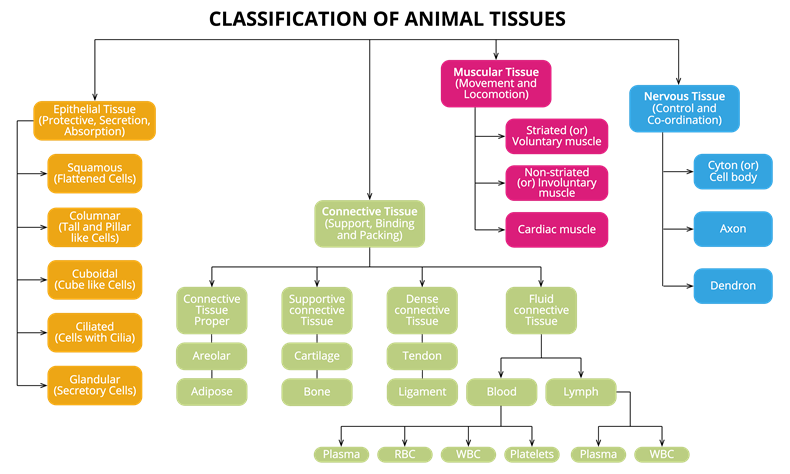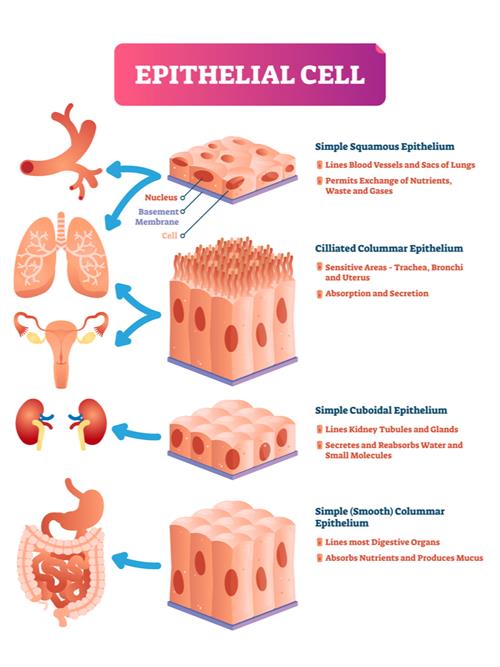PDF chapter test TRY NOW

Classification of animal tissues
Think about what will happen if we don't have skin? All our internal organs will be exposed to the environment, and we will be in danger situation. This condition is because the environment can create damage or injury to all our internal organs. To protect from the external environment, our body covered with a special type of tissue called epithelial tissue.
For example,
- Skin, an epithelial tissue, is acting as a protective layer, which protects our internal organs from the external environment.
- The small intestine has an epithelial tissue that helps in absorption,
- Epithelial tissue in the lungs helps in the exchange of gases,
- Epithelial tissue in kidney tubules helps in removing nitrogenous wastes.
The covering or protective tissue in the animal body is epithelial tissue.
1. Origin: Epithelial cells evolved first and are also the first-formed cells in the embryo. This tissue arises from all the three forms of germ layers: ectoderm, endoderm and mesoderm of the embryo. The word epithelium was coined by Frederik Ruysch.
2. Structure: It composed of cells that form membranes. This membrane protects the body surface and the glands.
3. Location: It is found in the skin, lining of the mouth, blood vessels lining, lung alveoli and kidney tubules.

Different types of epithelial cells
Note: Epithelial tissues are non-vascular (blood vessels absent) and depends on the underlying connective tissue for nutrients.
Characteristics and functions of epithelial tissue:
Protection:
- It covers the surfaces and lines in the cavities of organs. Therefore they are sometimes called surface tissues.
- It creates a barrier to keep different body organs separated from each other.
- In epithelial tissue, cells are tightly packed and create a continuous sheet.
- They does not have intercellular spaces, but they have a tiny amount of cementing material in between them.
- The epithelium is separated from the underlying tissue by an extracellular fibrous basement membrane containing collagen.
- The exchanging of materials in the body has to cross at least one layer of epithelium. So, epithelial cell's permeability is essential between the internal and external environment.
Respiration: Epithelium of lungs alveoli regulates oxygen and carbon dioxide exchange between blood and lungs.
Absorption: Line of epithelia found in intestine absorbs digested food.
Secretion: Epithelial lining in the cavities give rise to glands that provide valuable secretions such as mucus and gastric juice.
Excretion: Epithelial lining, present in kidney tubules, helps eliminate nitrogenous waste materials as urine.
Reference:
https://upload.wikimedia.org/wikipedia/commons/e/e6/Epithelial_Tissues_Simple_Squamous_Epithelium_%28frog%29_%2827847646938%29.jpg
